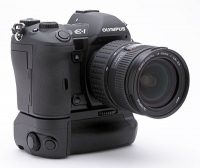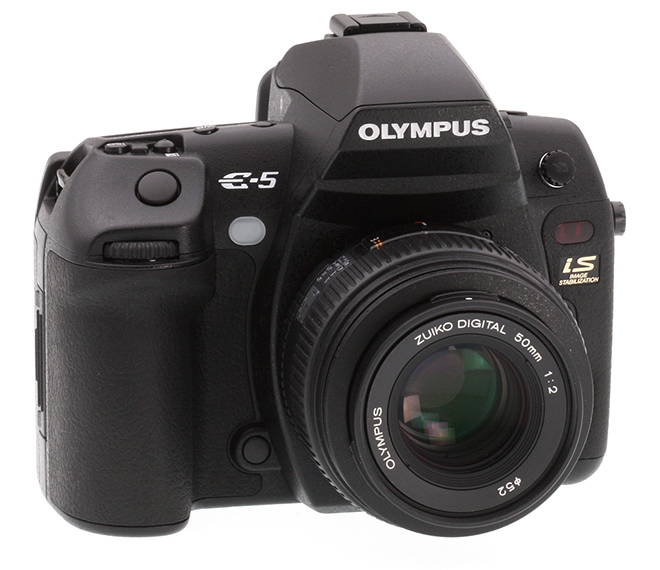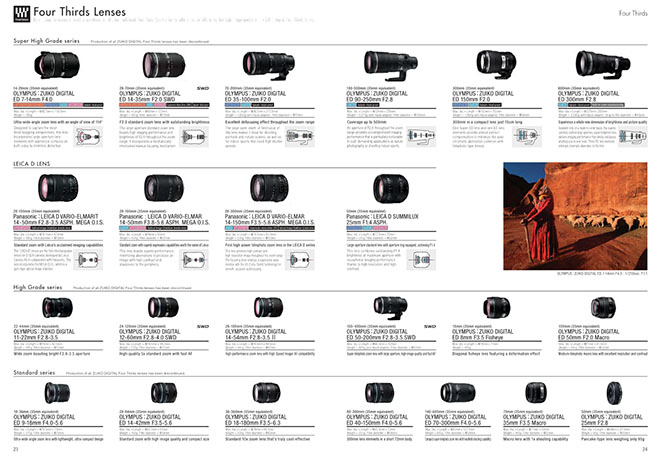The Four Thirds system is no more: long live Micro Four Thirds
posted Wednesday, March 15, 2017 at 10:00 AM EDT

In a product catalog showcasing the lineup of current Olympus lenses, a simple sentence on page 23 announced the fate of the Four Thirds system:
Production of all ZUIKO DIGITAL Four Thirds lenses has been discontinued.
With that simple stroke of a pen, Olympus moved on from the Four Thirds system to concentrate completely on the Micro Four Thirds system. Arguably, this was a foregone conclusion, as none of the members of the Four Thirds alliance (Olympus, Panasonic, and a handful of smaller manufacturers) has produced a new camera body specifically for Four Thirds lenses since 2010. Micro Four Thirds was introduced in 2008, with the huge technological step forward of removing the reflex mirror from an interchangeable lens camera. The Olympus E-5 was the last camera released in the Four Thirds mount, and perhaps the pinnacle piece for the system, a pro-level camera capable of creating fantastic images.
Four Thirds cameras were one of the first systems to feature some technological improvements to photography that we take for granted today. The main improvement was in-camera image correction: by knowing the characteristics of the lens attached, the cameras could automatically correct for distortion and vignetting. As well, the lenses could be made smaller and lighter than those produced by other manufacturers, as they only needed to cover the smaller image sensor of the Four Thirds design.

The Olympus E-5 included even more features, such as in-camera image stabilization. This was extremely popular, making every lens an image-stabilized lens, with a touted benefit of five stops of hand-holding improvement. Olympus Four Thirds bodies were the first to include a Supersonic Wave Filter dust reduction system, keeping dust off the sensor; a feature that has come to be standard on almost every camera system today.
Olympus was the most faithful to the Four Thirds system, producing fifteen camera models and nineteen lenses; Panasonic was slightly less prolific with only two camera bodies (and even Leica created a Four Thirds camera, the Digilux 3). Panasonic produced four lenses for the mount, designed in partnership with Leica, and Sigma converted fourteen of its models to work with the Four Thirds mount.

In terms of quality, Olympus ZUIKO lenses are exemplary. We reviewed fourteen of the lenses over the years, and even the consumer-grade "kit" lenses tested extremely well. One of the best lenses we ever tested was the Olympus 150mm f/2 ZUIKO, which offered the equivalent of a 300mm lens when mounted to the Four Thirds Olympus E-420. Happily, Four Thirds lenses are compatible with Micro Four Thirds bodies by way of an adapter -- in fact, lenses of many different systems can be adapted this way, creating one more reason to invest in a Micro Four Thirds camera.
While it is easy to lament to the extinction of a camera system, it's clear that the Four Thirds system has been surpassed by its "Micro" sibling. In terms of technological development, the Four Thirds system produced features that have found their way into almost all current camera systems, regardless of their manufacturer. Four Thirds cameras had the claim to fame of being smaller and lighter than their APS-C or 35mm sensor contemporaries, but Micro Four Thirds cameras were smaller still, making the Four Thirds camera redundant. Micro Four Thirds bodies are strong sellers, no doubt due in part to their size and convenience. The sensor has been adopted not only by still camera manufacturers but also video camera makers such as Blackmagic. Currently, over fifty models have been produced in the MFT mount, and over a hundred different lens models are available.
It's safe to say that Micro Four Thirds has successfully picked up the mantle from the legacy of the Four Thirds system, and the future is bright for that system.

